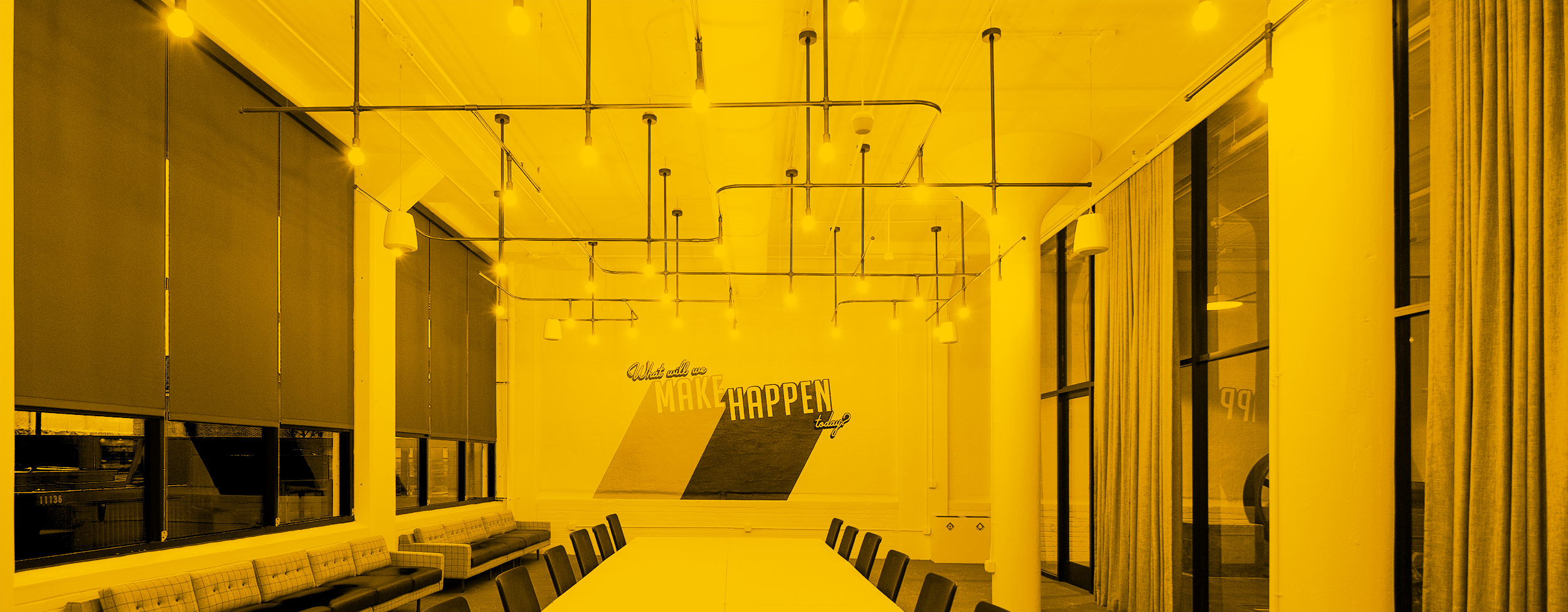

Q&A with Louis Cherry of Louis Cherry Architecture
At the turn of the century, Plant 7 and The Factory housed a hosiery mill that redefined their industry. Now, these historic buildings have been transformed and reborn as Congdon Yards. Here, principal architect Louis Cherry delves into the approach and inspiration he and his team drew on to revitalize these buildings which so beautifully embody High Point’s past, present, and future.
How would you describe the architecture of Congdon Yards? What story are you trying to tell?
The existing structures at Congdon Yards are magnificent buildings with a strength and power that you rarely see in contemporary design and construction. The Plant 7 building has boldly shaped concrete columns and generous natural light that creates beautiful luminous spaces. We didn’t want to cover up the structure but rather to open it up and make it more visible. Many of the original window openings had been covered up through the years and we restored almost all of the original openings with new glazing systems.
The Factory at Congdon Yards is a brick and heavy timber building that showcases wood construction from the turn of the century. Equally magnificent and very different from Plant 7, the Factory has graceful round wooden columns, massive wood beams and beautifully detailed cast iron connections. The floors are all very thick wood planks with more than 100 years of wear. The rows of arched brick windows provide the perfect counterpoint to all of the wood interiors.
When the Congdon Yards campus is complete these buildings will tell a story about High Point. The existing surfaces show their wear and tear from many years of factory work and with a rich patina. All of the new elements look fresh and new in contrast to the textures of age and heavy use in the existing buildings. The result is a dialog between the past, present and future. The past is High Point as a thriving manufacturing city that was all about quality, craft and hard work. The present is a renewed vision for a diverse community taking shape at Congdon Yards and anticipating a vibrant future combining social, cultural and technological elements.
Is the architecture inspired by any other structures, spaces or styles you love?
I have admired many examples of modern architects renovating wonderful older buildings. The most successful projects create a strong expression of the old and the new, respecting and honoring the past while affirming the new in a bold way. David Chipperfield’s design for the Neues Museum in Berlin took a severely war damaged building built in 1850 and, weaving together crisp modern renovations while retaining many damaged walls and structures, tells the story of the building’s past while creating a bright modern museum. The beauty of the interplay between the past and present in this building made a big impact on my thinking about old buildings and how to tell a story through architecture.
What are the biggest challenges and opportunities presented by this project?
In the case of Plant 7, it was two adjoining buildings with different floor levels and no real interconnection between the two building halves. This was a very big challenge and required a significant intervention. By inserting a daylit atrium into the center, we opened and connected all floors to a common space and also created a dramatic contemporary centerpiece that contains a sculptural central staircase and glass elevator shaft. This is a great example of taking a problem and turning it into an asset.
These buildings have a long history and there have been many changes over the years, as the needs of the users adapted them to each generation. As we have adapted them yet again for the next several generations, there have been many surprises to be uncovered as we peeled back the layers of time. The amazing thing is that these buildings were so solid with such good bones, that they can be adapted for over a hundred years and will last another hundred. Most recent buildings would have to be demolished either because the building was so narrowly designed for one use or it was built to last 30 years and is disintegrating. Even though there are plenty of challenges, these buildings are well preserved and the end result will be something that you simply couldn’t build today.
Are you especially excited about/proud of any particular part of Congdon Yards?
I can say, without hesitation, that Congdon Yards is the most visionary project that I have been involved in. The development stakeholders are all incredibly creative, positive and passionate about doing something amazing for High Point. The primary driver is to make High Point a better place to live. The initial idea of a creative hub has grown and evolved into a multi-dimensional mixed-use development that contains office, retail, co-working, restaurants, hotel, event center, furniture prototyping lab and many other synergistic uses. And all of this is anchored by indoor and outdoor public amenity spaces that function as an amazing indoor-outdoor public park. It is an ambitious real estate development that is driven by goodwill and civic responsibility.
What do you think Congdon Yards will mean for our community?
The Congdon Yards development is building on momentum from the adjacent developments including the Rockers Baseball Stadium and the Elliot Sidewalk Group projects that include a wide diversity of new development. Together, all of this will create a critical mass of new energy that is going to have a tremendous impact in making High Point a destination. Of all of the planned developments, Congdon Yards is the most focused on the High Point community itself. It is so unique and so authentic to High Point that it is impossible to imagine it anywhere else in the world. Congdon Yards will have a profound and transformative impact on High Point as a place of pride that serves our community.



